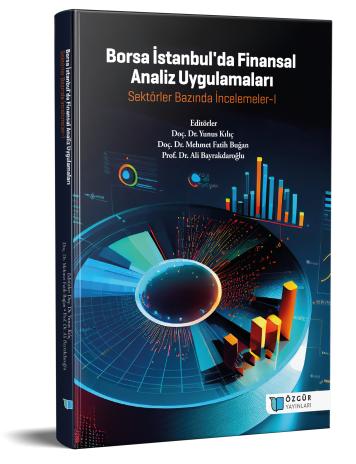
Aracı Kurumlar Sektörü Finansal Analizi
Şu kitabın bölümü:
Kılıç,
Y.
&
Buğan,
M.
F.
&
Bayrakdaroğlu,
A.
(eds.)
2023.
Borsa İstanbul'da Finansal Analiz Uygulamaları: Sektörler Bazında İncelemeler I.
Özet
Aracı kurumlar, işlerlikleri açısından finansal piyasaların vazgeçilmez bileşenleridir. Türkiye’de faaliyet gösteren halka açık aracı kurumlar finansal analiz ile bu bölümde incelenmiştir. Örneklem, 2018-2022 döneminde sektörün ortalamada varlık, işlem hacmi ve satış gelirlerinin sırasıyla %35, %22 ve %40’ını temsil etmektedir. Örneklemdeki tüm firmalar geniş yetkili ve köklü aracı kurumlardır. Sektör geneline kıyasla yüksek kaldıraç, yüksek aktif ve özkaynak devir hızı oranları ile satışlara dayalı kârlılık ölçütlerinde düşük oranlar, örneklemin tipik özellikleri arasındadır. Örneklem firmalarının oranları zaman boyutunda fazlaca değişkendir. Bu bulgu, yoğunlukla pay senedi işlemlerine aracılık eden sektörün piyasaların oynaklığına hassasiyeti ile ilişkilendirilmiştir. Bu nedenle, piyasa riskinin önemi son yıllarda tırmanışa geçen piyasalar ile daha da artmıştır. Örneklem içinde yer alan firmalar özelinde kaldıracın likidite üzerine olumsuz etkisinin nakit oran ile daha belirgin hale gelmesi, alacak yönetiminin önemini vurgulamaktadır. Borç yönetimi ve etkinlik oranlarının sektörün finansal performansına etkileri bakımından daha fazla öne çıkan ölçütler olduğu tespit edilmiştir. Bu bulgu, sektörün İş Yatırım gibi daha büyük oyuncuları açısından daha anlamlıdır. Artan piyasa hacimleri ile orantılı olarak artan işlem hacimleri hem borcu hem de varlık ile kaynakları etkin yönetmeyi gerekli kılmakta, hacimle artan gelirler ölçek nedeniyle kârları tutar olarak yükseltmektedir. Diğer yandan, örneklemin nispeten küçük aktörleri ve örneklem dışı aracı kurumlar için analiz edilen dönemin son 3 yılı itibariyle Osmanlı Yatırım, kâr performansı açısından nirengi noktasıdır. Sürdürülebilir büyüme, brüt kârdan başlayarak sonuç hesaplarına yansıyan kâr hedeflerini gerektirir. Bu yolla sağlanacak içsel kaynak birikimi için etkin bir gider yönetimi de ihmal edilmemelidir.

